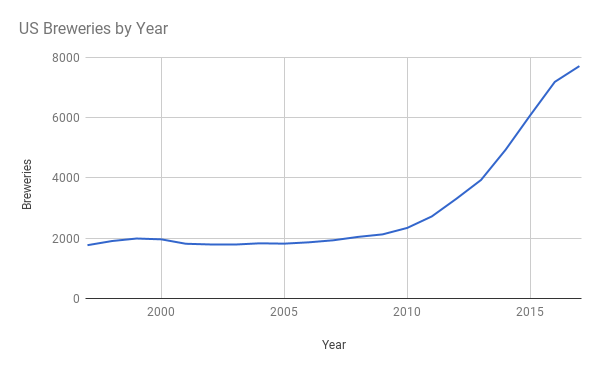The ability to communicate with each other is what separates human beings from animals. There are between 5,000 and 7,000 languages spoken throughout the world. The fact that there are so many different languages and yet we are still able to communicate is an amazing thing, and here at BatchGeo, we thought it would be pretty amazing to compile all of the most popular official languages throughout the world into one map.
View Official Languages by Country in a full screen map
As you can see on the map above, the most popular languages are available for filtering using the BatchGeo grouping feature.
There are five languages that are official in 10 or more countries: English (64), French (32), Arabic (27), Spanish (23), and Portuguese (10).
In addition to being the most popular, English is the only language officially designated on all six populated continents. Most of the 64 countries in which English is an official language are former territories of the British Empire.
Due to France’s position throughout history, as well as a history of colonialism, French is spoken throughout the world. Its designation as an official language, however, is situated mostly in Europe and Africa. The exceptions: Canada, Haiti, and Vanuatu.
Arabic, while nearly as common as French, is even more focused in its region of popularity. The Middle East and Northern Africa are home to all 27 Arabic-speaking countries. Similarly, many of those countries have some of the highest percentages of Muslim practitioners.
Spanish doesn’t have the European adoption of French, with Spain as the only country on that continent to consider it an official language. Still, Spanish manages to land in the fourth spot due to its incredible popularity in Latin America. Its only other locations are two countries in Africa (Western Sahara, Equatorial Guinea) and as the only language spoken officially on the South Pacific territory of Easter Island.
Finally, Portuguese may be fifth in terms of popularity, but its 10 countries are spread far and wide. The best known are likely Portugal and Brazil. Four others are on mainland Africa and two are African island nations. The other two? Macau (along with Mandarin and Cantonese) and East Timor, near Indonesia.
Our Monolingual World
Half the countries speak only one language, at least as an official language. On the monolingual list, English leads the way again, but not by nearly as much. There are 24 countries with only English as an official language, only 38% of all languages that have adopted English. By comparison, Spanish is the only official language of 19 of the 23 countries (83%) that “hablan español.”
Danish and Armenian have an interesting distinction not shared with any other languages. Danish is the official language in Greenland, Faroe Islands, and Denmark. Armenian is official in Nagorno-Karabakh and Armenia. And in all five of these countries, there is only a single language. In other words, 100% of countries that speak Danish or Armenian are monolingual.
There are another 26 monolingual countries that speak a language that is only official in that country. Most of them will sound familiar because they’re named after the one country that speaks it. For example Hungarian, Bulgarian, Latvian, and Lithuanian are probably not surprises. Some interesting ones from this group include Manx Gaelic (only official language of the Isle of Mann) and Gàidhlig (Scotland)
Countries with the Most Official Languages
Despite the large numbers of monolingual countries, a few go the other way. Seven countries have 10 or more official languages. All of these countries are in Africa, which has a history of both tribal dialects and multiple colonial occupants. Together these factors lead to many official languages.
The Republic of Benin, perhaps best known as the birthplace of Voodoo, has a population of only around 11 million. Yet, there are 21 official languages: Aja-Gbe, Anii, Bariba, Biali, Boko, Dendi, Fon-Gbe, Foodo, French, Fula, Gen-Gbe, Lukpa, Mbelime, Nateni, Tammari, Waama, Waci-Gbe, Xwela-Gbe, Yobe, Yom, and Yoruba. While three of Benin’s official languages can be found in other countries (French, Fula, and Yoruba) the rest of Benin’s 17 official languages are found exclusively in the country.
The second country with 10 or more official languages is Senegal. This far west country in Africa has 15 official languages for a population of around 15.5 million people. While French, Fula, Soninke, and Wolof are all languages found elsewhere, 11 of the 15 official languages are unique to Senegal.
Zimbabwe is the third country with 10 or more official languages. There are 14 official languages are spoken in Zimbabwe, which has a population of about 16 million people. Seven of those 14 official languages are exclusive to Zimbabwe, with English, Ndebele, Tswana, Chichewa, Venda, and Xhosa being spoken in other countries but the rest can only be found in Zimbabwe. The southernmost country of Africa, South Africa, right below Zimbabwe, has 12 official languages. Of those 12, four are unique to the country.
Mali, like South Africa, also has 12 official languages, one of which is Arabic which is only spoken in the Northern half of countries within Africa aside from the islands of Comoros in the Southern part. Niger, bordering Mali to the east, has 11 official languages, five of which are exclusively found in Niger. Finally, Ghana has exactly 10 official languages. Aside from English, all of the languages in Ghana are unique to this country.
Whether you live in a country that has one official language or 21 official languages, the map above provides some insights into the countries around the world and the languages spoken there. No matter if you are most familiar with a language that is official in 10 or more countries, or you are more familiar with a language utterly unique to your own country, we’ll always have some form of language to communicate with.


